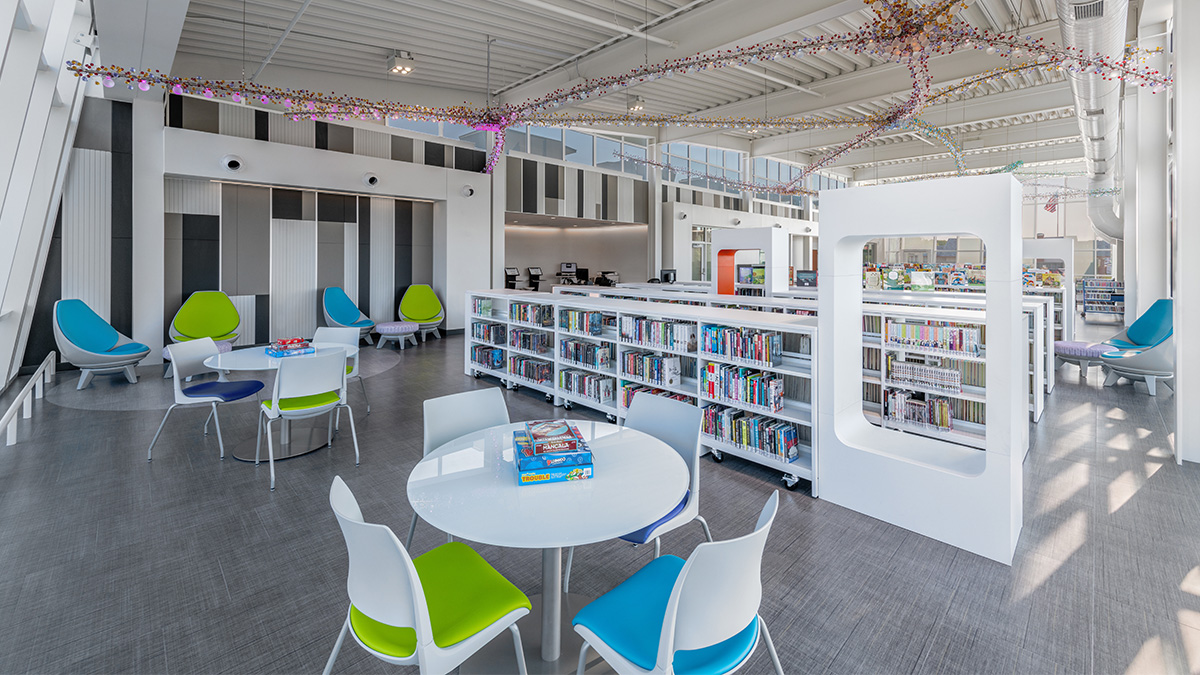- What's New
- Pricing & Purchasing
- Lead Times
- Literature & Samples
- Services & Warranties
- Careers
- Find a Rep
How to Increase Your Purchasing Power with Cooperatives

 Bryan Ballegeer
Bryan Ballegeer
As the former director of purchasing for a network of educational institutions, I know firsthand that acquiring the right furniture, equipment and supplies for your facilities can be a challenging and confusing process at times.
Fortunately, I discovered that using a cooperative could save hundreds of hours and greatly simplify a complex process. When I later joined KI, I found additional ways to organize and control the often-chaotic process through both national and local purchasing contracts.
To illustrate, let me walk you through the process of how to purchase equipment through a typical bid process as well as through a cooperative partnership.
The Hard Way: Traditional Bid Procurement
During my first two years in a purchasing role, I went through a typical bid solicitation process to procure everything from pencils to furniture for our schools.
My team and I invested an enormous amount of effort in this process. We began by reviewing the products and supplies the schools currently used, organizing them by grade level and subject matter, and then estimating how many new items we’d need depending on enrollment expectations.
From there, we drafted a request for proposal (RFP) and attorneys poured over the contract to make sure it accurately represented what we needed. For instance, if we wrote an RFP too broadly, we might receive bids from vendors that didn’t meet our school’s needs—and they might dispute their loss of the contract if we went with another vendor’s bid over theirs.

After advertising the RFP, we answered questions from prospective vendors. Then came the really time-consuming part. We compiled and logged all of the RFP responses and reviewed them to ensure they complied with local requirements for wages, shipping and so on. We also had to review any substitutions the vendor made for our requested items and confirm with teachers that the substitutions would work for their curricula.
Once we made our decision, the whole bid was sent to upper management for approval and to legal for review. Upon their approval, we finally announced which vendor was awarded the contract.
Overall, the process took our team close to 230 hours over three months.
The Easy Way: Purchasing Cooperative Partnership
During my third year in education operations, I learned that we could buy equipment through a purchasing cooperative.
When you partner with a purchasing cooperative, you become part of a network of organizations—often school districts, colleges, universities, government institutions—that can access a group of vendors and suppliers with ready-to-use competitive contracts.

Public institutions like libraries and other government-run facilities, as well as school districts, colleges and universities, can qualify for cooperative partnerships.
Since suppliers must meet best practice requirements to join the cooperative, we didn’t have to individually vet the pricing, shipping and other contract elements from each supplier. Instead, we could rest assured we were purchasing quality products that met our needs at competitive prices. We could also receive deeper pricing discounts based on quantity.
Before joining a cooperative, we always did our due diligence to review its RFP process, standards and awarded contracts to evaluate whether it would be a good fit for our organization. We found the best cooperative contracts allow for adding terms and conditions to meet local bid requirements.
Simplify the Complex: A Better Way to Buy
Using a purchasing cooperative shaved more than 100 hours and one month off our usual timeline. By saving my team so much time and effort, we were able to spend more energy focusing on what matters most: our students, teachers and curriculum.
We also didn’t have to draft an RFP from scratch, advertise it in local newspapers, field questions from vendors, or comb through countless RFP responses and substitutions to ensure they met our needs, local requirements and held up to judicial review.
The cooperative process was much more streamlined. Once we determined what we needed to buy, we simply requested quotes from different co-op suppliers, got approval from upper management and placed an order.

The legal work was also less time-consuming. Attorneys still reviewed our contract, but the two main issues they address with a traditional bid—inexact RFP language and the potential for legal disputes after the contract is awarded—weren’t nearly as likely to arise when we used a co-op.
Find a Purchasing Cooperative
Among the reasons I joined KI is the organization’s passion for understanding how the physical environment impacts the learning experience. We know that proper design and supportive furniture is essential to support students and teachers.
And I know from personal experience that partnering with co-ops can make the procurement process so much simpler. Cooperatives can help school districts, nonprofits and governments streamline the months-long process of purchasing equipment, often while reducing costs and improving the quality of the services received.
KI is a nationally recognized furniture supplier for Sourcewell, OMNIA, NASPO, NPP Gov and TIPS. For information on purchasing cooperatives in your state or local area, view our interactive map showing state contracts and contact info.
If you have any questions about purchasing cooperatives, please shoot me a note at bryan.ballegeer@ki.com.
Subscribe
Stay up to date with the latest trends and more.
